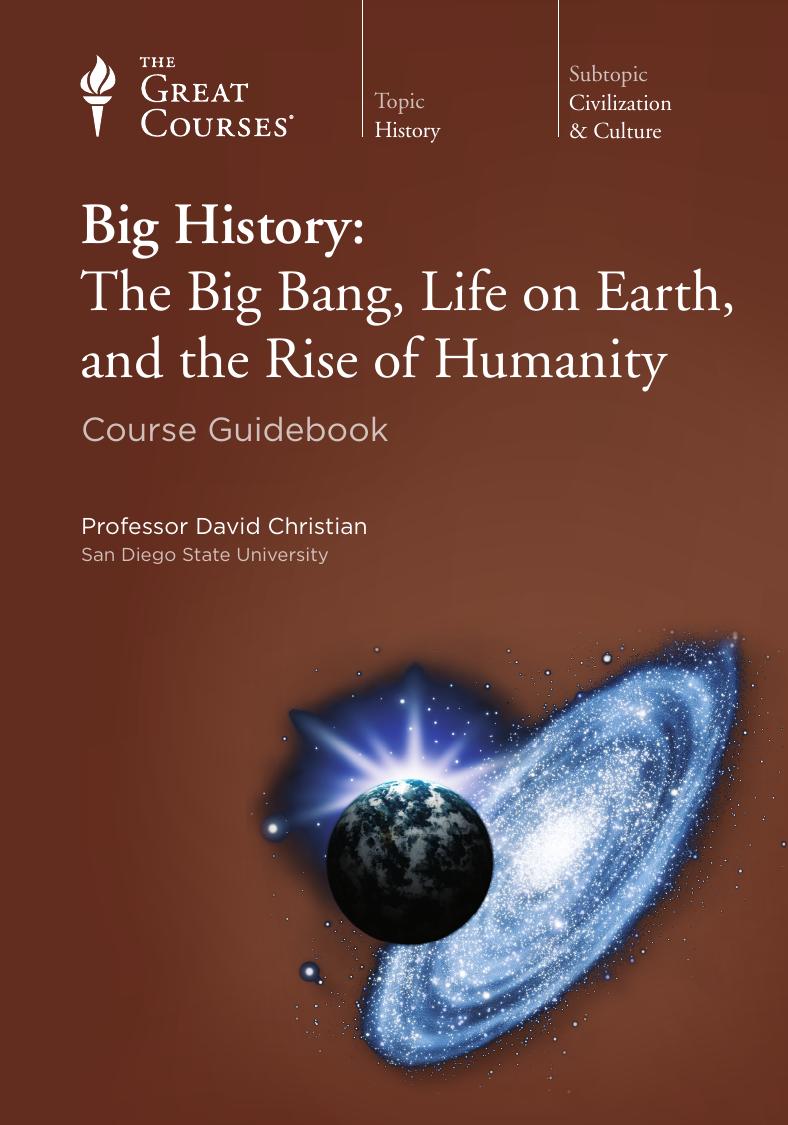
Big History: The Big Bang, Life on Earth, and the Rise of Humanity PDF
290 Pages·2008·5.4408 MB·other
Most books are stored in the elastic cloud where traffic is expensive. For this reason, we have a limit on daily download.
Preview Big History: The Big Bang, Life on Earth, and the Rise of Humanity
Description:
Big history surveys the past at all possible scales, from conventional history, to the much larger scales of biology and geology, to the universal scales of cosmology. It weaves a single story, stretching from the origins of the Universe to the present day and beyond, using accounts of the past developed within scholarly disciplines that are usually studied quite separately. Human history is seen as part of the history of our
Earth and biosphere, and the Earth’s history, in turn, is seen as part of the history of the Universe. In this way, the different disciplines that make up this large story can be used to illuminate each other. The unified account of the past assembled in this way can help us understand our own place within the Universe. Like traditional creation stories, big history provides a map of our place in space and time; but it does so using the insights and knowledge of modern science.
At first, the sheer scale of big history may seem unfamiliar—after all, historians usually focus on human societies, particularly those that had states and left documentary records. Until the mid-20th century, “history,” in the sense of a chronologically structured account of the past, meant “human history” because we could only date those parts of the past for which we had written records. Since World War II, however, new dating techniques have allowed us to determine absolute dates for events before the appearance of written records or even of human beings. Radiometric dating techniques, based on the regular breakdown of radioactive materials, were at the heart of this chronometric revolution. These new chronometric techniques have transformed our ideas of the past, enabling us for the first time to construct a well-structured, scientifically rigorous history extending back to the origins of the Universe!
Earth and biosphere, and the Earth’s history, in turn, is seen as part of the history of the Universe. In this way, the different disciplines that make up this large story can be used to illuminate each other. The unified account of the past assembled in this way can help us understand our own place within the Universe. Like traditional creation stories, big history provides a map of our place in space and time; but it does so using the insights and knowledge of modern science.
At first, the sheer scale of big history may seem unfamiliar—after all, historians usually focus on human societies, particularly those that had states and left documentary records. Until the mid-20th century, “history,” in the sense of a chronologically structured account of the past, meant “human history” because we could only date those parts of the past for which we had written records. Since World War II, however, new dating techniques have allowed us to determine absolute dates for events before the appearance of written records or even of human beings. Radiometric dating techniques, based on the regular breakdown of radioactive materials, were at the heart of this chronometric revolution. These new chronometric techniques have transformed our ideas of the past, enabling us for the first time to construct a well-structured, scientifically rigorous history extending back to the origins of the Universe!
See more
The list of books you might like
Most books are stored in the elastic cloud where traffic is expensive. For this reason, we have a limit on daily download.
